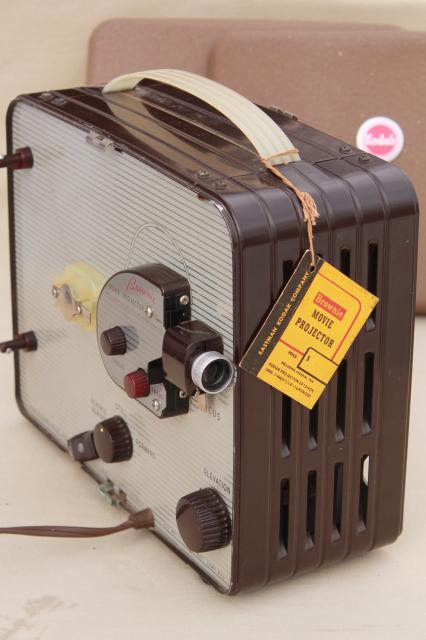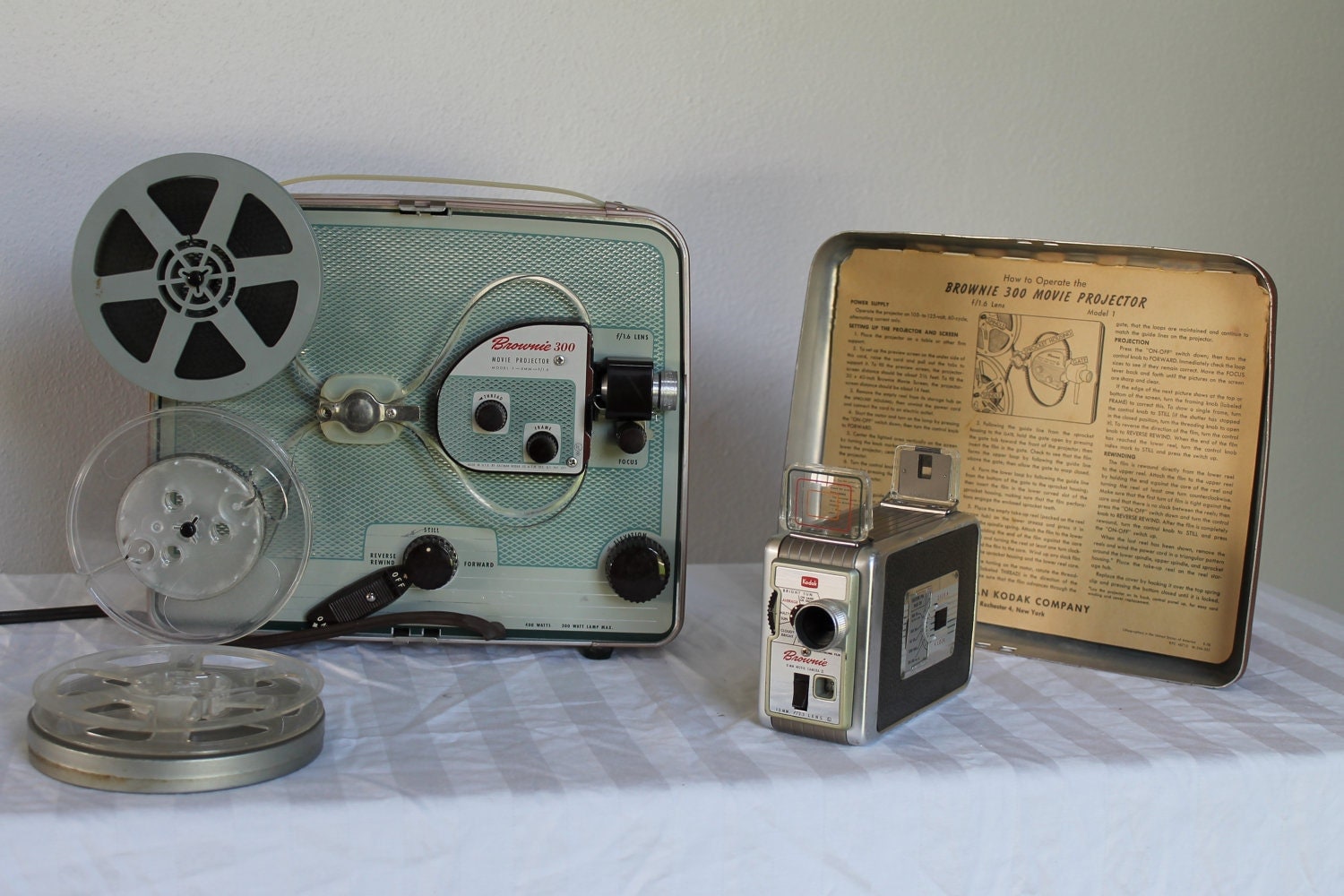

(After the introduction of the Model B, below, some product literature refers to this projector as the Model A.
#BROWNIE MOVIE PROJECTOR PORTABLE#
Special model: white and gold Brownie Movie Camera in Kodak Movie Gift Kit designed as a wedding giftīrownie Movie Camera Spotscope f/1.9 Exposure Meter Modelīrownie Turret Movie Camera Spotscope f/1.9 Exposure Meter Model, name changed in Dec 1958 to Kodak Cine Scopemeter Camera Turret f/1.9īrownie Movie Projectors US Models Projector Name and Modelīrownie Movie Projector f/1.6 lens, Universal AC-DC Model 2īrownie 300 Movie Projector f/1.6 lens, Universal AC-DC Model 2īrownie 300 Movie Projector f/1.6 lens, Model 4 Kodak Brownie 500 Compact Portable 8mm Film Movie Projector. Its body is a metal body covered in black leather.Home - list of brownie movie cameras and projectors The List of Brownie Movie Cameras & Brownie Movie ProjectorsĪ special thanks to the folks at The Brownie Group for finding and publishing this information! 2,300 and its measures are the following: 70x126x243. There are some other sub-varieties, but mostly having to do with the colored models. The fourth type added interchangeability to the lens late 1928. The third type was equipped with the 25mm f/1.9 lens, non-interchangeable mid-1927. All f/6.5 and f/3.5 cameras were equipped with a 20mm lens. No dates available for the change, but probably a year or so later based on production numbers. Close the projector, take the three-core mains lead from the. There was a second version that changed the shift mechanism for the closeup (from wheel to button) and changed the closeup range from 4-8 ft down to 2-5 ft.

The f/3.5 Model was introduced early in 1926 (approximately April). The Newton finder was quickly added (first as a do-it-yourself kit, then to production). The original Model B was produced in 1925 (July, roughly, based on Kodak's advertising), with f/6.5 lens and no Newton finder. This is a very good movie camera, produced between 19. Production of Model A ceased in 1930 the Model B in 1931. Special Editions of the Model B were released with ostrich leather covering the camera body and carrying case.
#BROWNIE MOVIE PROJECTOR FULL#
A full winding of the spring would run the motor for about fifteen to twenty feet of film. In 1925, Kodak followed with a spring motor-driven Ciné-Kodak Model B, at which time the original Ciné-Kodak was re-designated as Model A, though that designation was not added to the camera nameplate until November 1929.

With the discontinuation of the motor, additional crank accessories were introduced: one for single frames, and one with a 4:1 gear ratio for slow motion work. The only additional lens offered was a 78mm f/4.5 telephoto. The lens focal range was 2 to 50 feet and INF (infinity). Early in 1924 a battery-powered electric motor attachment was introduced, but discontinued in 1926, at which time an improved version of the camera with an interchangeable Kodak Anastigmat f/1.9 lens was introduced. The camera was equipped with a fixed 1-inch (25mm) lens. From family events to amateur and experimental movie productions, these cameras provided a new way to record personal history, and alternative creative outlets to Hollywood entertainment. Hand cranking meant that a tripod was essential to achieve a steady image. The first prototype was a leather covered rectangular wooden box, which evolved into a final cast aluminum box approximately 8.5" by 5" by 3", and was cranked by hand at two turns per second to achieve the necessary 16 frames per second. The Ciné-Kodak was the first 16mm camera, introduced in 1923 by the Eastman Kodak Company. It was intended to be used for home movie making.


 0 kommentar(er)
0 kommentar(er)
